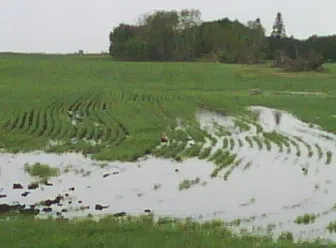
Rain causing many problems in Sask
Farmers just can’t seem to catch a break.
After heavy moisture caused seeding to be late this year, farmers are now facing flooded and damaged crops due to the recent heavy rain.
Kerry Peterson, who farms near Shellbrook, said they received five inches of rain in the past week and about 15 per cent of his crop is under water.
“I’d say this 15 per cent is going to be beyond repair. It’s laying water and I’d think your crop’s got, at the most, a couple of days that it’d be able to deal with that providing it’s soaked away. I think because of the amount of rain now, it’s not going to be able to soak away,” he said.


